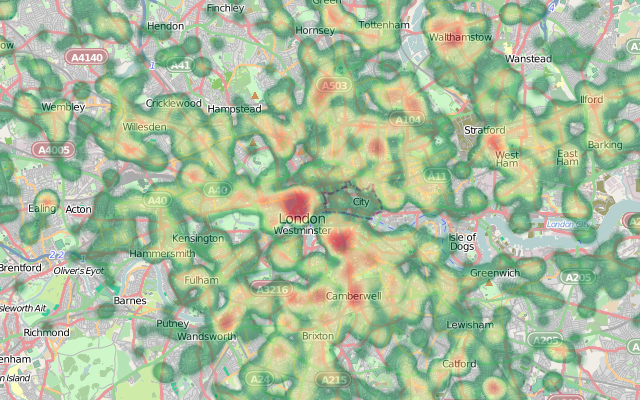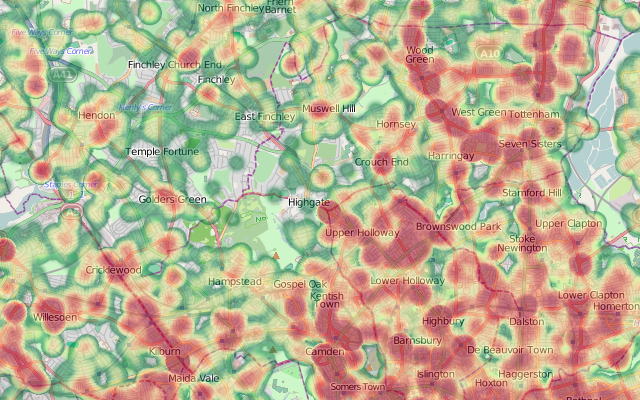
Transport for London have gradually been adding docking stations to the Barclays Cycle Hire network in central London – and occasionally they remove, rename or relocate the existing ones. TfL do now have a webpage which is manually updated with docking station news, but there’s no good way to spot when a new docking station might have appeared in your neighbourhood – without coming across it accidently or waiting for the official page to be updated, so I’ve created Dock Monitor. It’s a blog that is automatically updated as soon as new docking stations appear, or changes happen to the existing ones. Every hour, a script downloads the latest list of stations from the official map, compares with its existing list, and then submits new blog posts as appropriate.
Changes happen surprisingly often. Docks often shrink in size to 0 as they are temporarily operated on (rather than disappearing from the map or having their status changed to not installed.) New docks are sometimes put in with the wrong name or location, these normally get corrected soon after. To try and cut down on the noise, I only post about size changes where more than 20 docking points in the dock are affected, and docks have to have been missing for more than 48 hours before I announce these. TfL has also been changing the IDs associated with some of the docks – which is not something that impacts people using the system, but is a big headache for third-party developers who were hoping that TfL’s IDs were going to be canonical. Looks like I’ll need to create my own set of IDs… Anyway Dock Monitor should spot this too.
Because the blog posts are automatically made, then a data error at source may course a massive burst of blog posts to appear. If this does happen, I’ll try and manually clean up the blog once I notice it.
You can see Dock Monitor here (or subscribe to the RSS feed). You can also view just newly added docks, or the corresponding feed.






 The routing is done based on the
The routing is done based on the 





